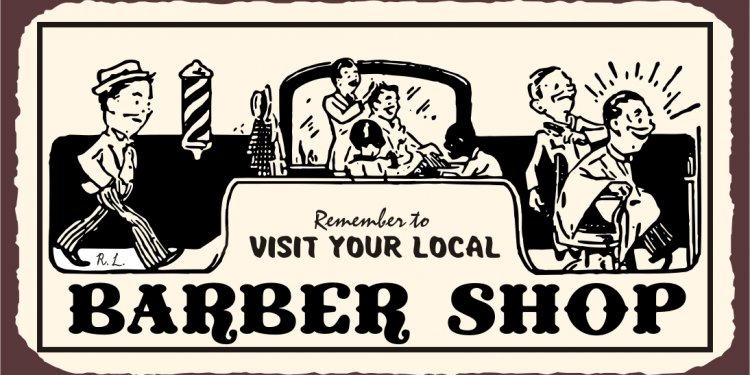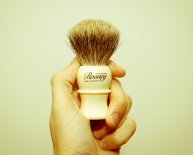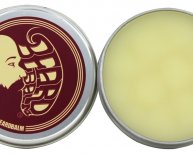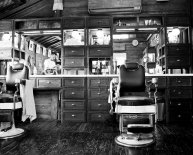
Antique Barber Poles
The barber business has an appealing history which can be traced back to the full time when barbers performed more than simply slashed hair. In the earlier days, barbers performed surgery and tooth extractions. Actually, the barber pole had its source because of the training of bloodletting. There is a time, which extended to the late 1800s, and in some rural components of this country in to the early twentieth century, when it had been thought that eliminating blood from an ill individual would rid all of them for the diseased bloodstream and impact a cure. The barber surgeon will have the person grasp a-pole so their veins would get noticed. The blood was collected in a basin, and linen cloths were used to bandage the niche as well as general cleanup. The linens employed for cleanup had been usually reused and is hung on the pole and allowed to dry outside the shop. The wind sometimes twirled the purple and white bandages all over pole which colored swirl design had been fundamentally followed and coated onto poles to spot the barber store.
These poles became permanent outside advertising fixtures. In america, along with blue ended up being put into the pole as a patriotic motion. It had been perhaps not before the very early 20th century that barber poles came to possess classic rotating cylinder. In the early models, a hand-wound clock-like method switched the striped cylinder. Because of the mid-1920s, most barber poles had electric engines.
Antique barber poles are available in multiple designs, size and shapes. A 1930s Koken barber store wall-mount light pole in good doing work condition will actually sell for $1, 500, but a fully-restored, porcelain enamel revolving 1920s lighted street pole brings $6000 or more. The barber pole is certainly one of numerous different barber shop collectibles. Enthusiasts tend to be specially interested in just what might be called the fantastic age regarding the barbershop. The time scale between 1880 and 1940 signifies the good past as soon as the barbershop was a bastion for guys. It served as a gathering location for males just, and even though seated upon a throne-like chair, they could just for some coins get a haircut, a shave and catch up regarding the most recent town gossip.
The initial seats were made of lumber along with four feet. These wood chairs usually had fancy carvings and were upholstered with plush and fanciful fabrics. In 1874, Ernest Koken of St. Louis began using sales from local barbers for custom-decorated shaving mugs, in addition to Koken Barber provide Co. came to be. Right after, Koken began attempting to sell seats to barbers, plus 1881, the organization patented initial Koken chair that reclined for shaving. A chair that revolved and reclined ended up being branded in 1885.
In 1892, Koken developed the very first foot-pedal hydraulic chair that later became a standard. At turn associated with the century, porcelain enameled cast-iron chairs came into vogue. These days, Koken chairs are highly prized among barber chair enthusiasts. An early cast iron seat in good working condition can be found for less than $500, while an entirely reconditioned chair could fetch $5, 000 or maybe more.
Barbershops in those times had fancy straight back bars with barber bottles containing locks tonic, locks oil, bay rum, witch-hazel, rosewater plus many shops, colorful bottles containing the barbers special concoction. Before the 1906 pure-food and Drug Act, containers were not labeled but had unique colors therefore the barber could recognize the articles because of the colour of the container. The articles of some containers were certain to a particular client, and consumers title ended up being highlighted regarding the container. These days, these containers tend to be prized by the barber bottle collector.
The private identification of customers had not been restricted to containers of hair tonic. Perhaps the most desirable of all of the barbershop collectibles today is the work-related shaving mug. Occupational mugs weren't frequently found in American barbershops until about 1880. These hard-paste, white porcelain mugs had been initially from Staffordshire England, France, and Germany but hand embellished in this country. These were private mugs with a persons title and a hand-painted picture, representing the patrons occupation.
Patrons believed it had been more hygienic to possess their own private shaving mug plus so doing, believed they'd get rid of a shaving rash. Any rash the customer experienced, however, came not from mug that has been used, but through the unsanitary shaver utilized by the barber.
Nonetheless, such mugs served as a standing image; not just the customer, nevertheless quantity of mugs the barber had on display in his cup rack was an aesthetic representation of this size of his customers.
Typical home mugs sell for as low as $10-$30, but work-related mugs can range from $400 up to $5, 000, based upon problem together with rarity associated with career.
Obviously, we cant speak about shaving without discussing the straight razor plus the strop employed for improving the knife. Straight razors needed considerable ability to hone and strop and many more skill and treatment during actual shave. This was a major area of the curriculum of very early barber colleges. Straight razors remained the barbers razor of preference, even with the introduction of Gillettes protection Razor in 1904.
Prices for classic straight razors rely upon the material that the handle is made, including bakelite, bone, mother-of-pearl, tortoise shell, etc. A decoration on the blade is another aspect in valuing an old-fashioned straight razor. The blade might be embellished by engraving and/or gold leafing or on less costly models, by acid engraving. The manufacturer is yet another aspect aided by the German manufactures becoming the most desirable. Costs for traditional right razors cover anything from ten dollars to $100 or more.
Other barbershop collectibles include sterilizers, disinfectant jars, shaving brushes, shaving soaps, waste containers, barber indications, clothing brushes, and just about something related to barbering which has had disappeared, having already been changed by contemporary unisex salons.
Syl Turner may be the owner and operator of this Broad Street Antique Mall in Chamblee, Ga. Lots of the photographed things in this article, alongside a huge selection of extra barbershop memorabilia, are located in the Broad Street Antique Mall, or accessed on the internet site: BroadStreetAntiqueMall.com
Ca. 1927 Emil J. Paidar fully restored porcelain road barber pole, $6, 000.
Berninghaus Hercules Barber Chair, 1901, found in the movie, The Time Machine; $15, 000-$20, 000. (Photo courtesy, the J. Kimble range.)
Ca.1900 tresses tonic bottles, $75-$100 each.















